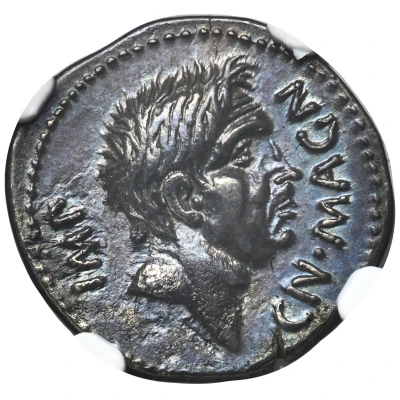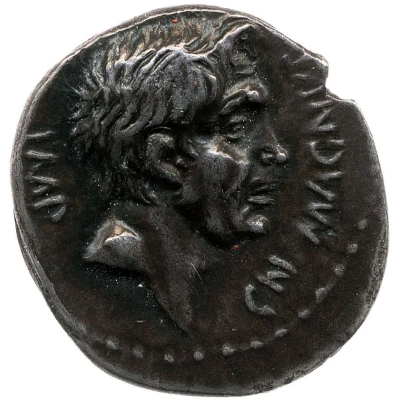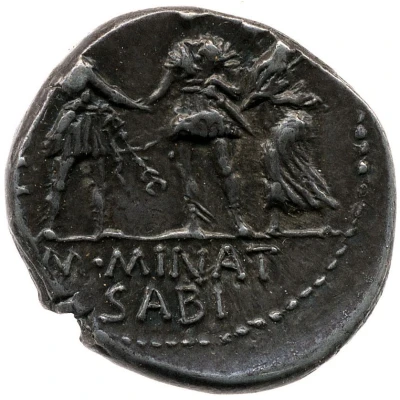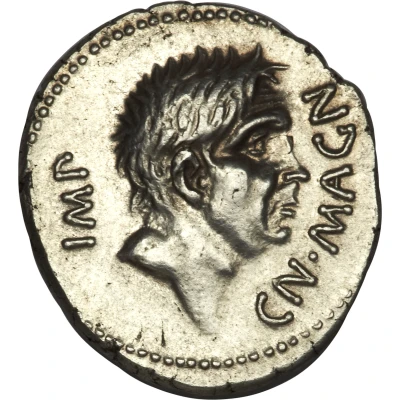
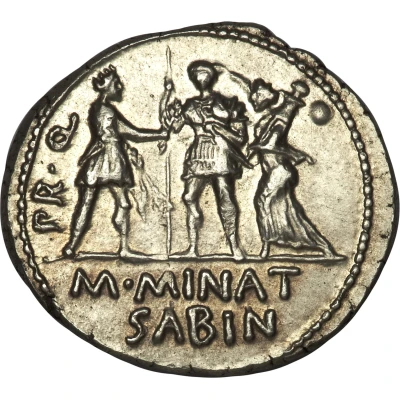

© Heritage Auctions
Denarius - Gnaeus Pompeius CN•MAGN IMP / M•MINAT SABIN PR•Q 46 BC - 45 BC
| Silver | 4.02 g | 19 mm |
| Issuer | Rome › Roman Republic (509 BC - 27 BC) |
|---|---|
| Period | Republic (509 BC - 27 BC) |
| Type | Standard circulation coin |
| Years | 46 BC - 45 BC |
| Value | Denarius (1) |
| Currency | Denarius of 16 Asses (141 – 27 BC) |
| Composition | Silver |
| Weight | 4.02 g |
| Diameter | 19 mm |
| Shape | Round (irregular) |
| Technique | Hammered |
| Orientation | Variable alignment ↺ |
| Demonetized | Yes |
| Updated | 2024-10-06 |
| Numista | N#24530 |
|---|---|
| Rarity index | 100% |
Reverse
Spanish city standing right, wearing turreted crown, holding caduceus in left hand and with right hand offering branch to Pompeian soldier who stands facing, leaning on spear with right hand; on right, another Spanish city, walking left and wearing turreted crown, holding trophy in left hand, crowns soldier with right hand; in exergue, inscription; on left, inscription. Border of dots.
Script: Latin
Lettering:
M•MINAT
SABIN
PR•Q
Unabridged legend: Marcus Minatius Sabinus Pro Quæstor
Translation: Marcus Minatius Sabinus Proquaestor
Edge
Plain
Comment
Several variants are grouped under RCV#1385. Coins with similar obverse but different reverse shall be listed separately and can be differentiated by RRC (British Museum), CRR (Sydenham) or RSC (Seaby & Sear) references.Interesting fact
One interesting fact about this coin is that it features an image of Gnaeus Pompeius, also known as Pompey the Great, who was a prominent Roman general and statesman during the late Roman Republic. He was a member of the First Triumvirate, along with Julius Caesar and Marcus Crassus, and played a significant role in the transformation of the Roman Republic into the Roman Empire. The coin was minted during his reign as consul in 46 BC, and it is believed that the image of Pompey on the coin was meant to promote his image as a powerful and influential leader.
